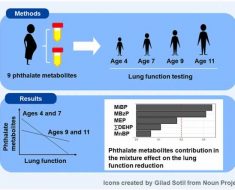Economic growth, mortality, and healthcare spending appear to influence each other, according to the authors of a new study in which they analyzed data from more than two dozen high-income countries.
Notably, the mortality rate has a negative effect on current healthcare expenditure, while an increase in gross domestic product (GDP) is associated with an increase in current health expenditure.
“There is now a lot of scientific literature supporting the importance of health expenditure as an overall economic multiplier,” study author Davide Golinelli, MD, PhD, a research fellow in epidemiology and health policy at the University of Bologna, in Italy, told Medscape Medical News.
“Our findings reinforce the available evidence and suggest paying close attention to investments in health, both to improve the health of the population and for countries’ economic growth,” he said. “At a time of great incertitude, where reducing public spending is being discussed, these aspects should be taken into great consideration.”
The study was published October 19 in Forum for Health Economics and Policy.
Healthcare Expenditure Increased
Western countries’ socioeconomic growth has led to a continuous improvement in populations’ health, the study authors write. However, countries’ healthcare spending has also grown continuously in recent decades, becoming a major expenditure and threat to the overall sustainability of healthcare systems. Many studies suggest that healthcare spending can improve health and mortality rates; other studies have found that healthcare expenditure is influenced by factors such as the socioeconomics, health, and education of the population.
The investigators used panel data from the World Health Organization and the Organization for Economic Cooperation and Development to analyze the associations between GDP, age-standardized all-cause mortality rate, and current healthcare expenditure in 31 high-income countries from 2000 through 2017.
Health expenditure was analyzed per capita in US dollars and was adjusted for purchasing power parity using 2018 as the base year. Factors involved in determining expenditures included healthcare goods and services provided directly to patients, and collective healthcare services, including inpatient, outpatient, and out-of-pocket costs.
The research team investigated the associations using a random-effects model. They included control variables such as education level, elderly population (age 65 years and older), and type of healthcare system. To control for reverse causality, they tested for Granger causality, which allows for heterogeneity of the causal relationship and for the presence of control variables.
Overall, healthcare expenditure increased throughout the study period in countries with various healthcare systems — single-payer, insurance-based, mixed, and private. The average healthcare expenditure was $2111 in 2000 in single-payer healthcare systems. This increased to $4344 in 2015. In insurance-based systems, healthcare expenditure grew from $1758 in 2000 to $2664 in 2015.
Conversely, the all-cause mortality rate declined during the study period in all countries with single-payer, insurance-based, mixed, and private healthcare systems. For example, in countries with a single-payer healthcare system, mortality rate decreased from 940 deaths per 100,000 population in 2000 to 724 deaths per 100,000 population in 2015.
In addition, GDP increased in all high-income countries included in the study. In countries with single-payer systems, the average GDP was $27,796 per capita in 2000. This increased to $46,256 in 2015. In those with insurance-based systems, GDP grew from $24,294 in 2000 to $43,743 in 2015.
The random effects model showed that all-cause mortality had a statistically significant and negative effect on current health expenditure, but the relationship couldn’t be confirmed in the opposite direction.
In addition, an increase in GDP was associated with an increase in current health expenditure, but GDP didn’t have a significant effect on mortality rate. For each additional $1000 of per capita GDP, the per capita health expenditure increased by $76.
Bidirectional Associations
The Granger causality analysis found that all the variables exhibited bidirectional associations. The strongest two-way relationship was between GDP and current health expenditure.
For all countries, the education level and elderly population increased over time. Education level was negatively associated with health expenditure and mortality rate and was positively associated with GDP. As the proportion of the population older than 65 years increased, health expenditure increased, and GDP decreased.

Dr Fabrizio Toscano
“The link between GDP, mortality, and healthcare spending remains a tricky connection that nobody can overlook,” study author Fabrizio Toscano, MD, a resident physician in internal medicine at Montefiore Medical Center in New York, told Medscape.
“If, from an ethical point of view, we consider healthcare a priority, the increasing demand of cost-effective spending requires better evidence,” he said.
The research team didn’t find a statistically significant association between healthcare expenditure, as the independent variable, and mortality rate, which suggests that the association between spending and the population’s health is “neither perfect nor linear,” the authors write.
“It is difficult to say if better evidence in support of healthcare spending will be available any time soon,” said Golinelli. “As we move forward in a big-data world, it is unclear whether increased granularity will help to uncover new correlations or end up increasing the noise. However, the question we should probably start asking ourselves is how much we value healthcare and its service to society.”
As the debate on the optimal allocation of resources resumes in the present economic crisis, the authors write, countries should take these relationships into account.
GDP Isn’t Everything
“Economic growth, healthcare, and mortality are two-way (or three-way) streets. One improves the other. That makes intuitive sense — if we want a good life, we need to spread investment in economic growth, healthcare, education, health behaviors, and other factors,” Douglas Manuel, MD, a senior scientist at the Ottawa Hospital Research Institute in Canada, told Medscape.

Dr Douglas Manuel
Manuel, who wasn’t involved with this study, has researched the links between economics, health, and healthcare. As a public health physician involved with the COVID-19 pandemic, he has seen the conversation about economics and health come to the forefront of policy decisions.
“You need a strong economy to support science and industry to develop and produce vaccinations and a strong healthcare system to help people who develop COVID-19. But ultimately, the countries with the best COVID-19 health outcomes were not the ones with the highest economic growth and strongest healthcare systems,” he said. “Rather, they had trust in each other and their governments. To achieve prosperity and good health, we need to spread our attention to many factors. Focusing on GDP is not the sole solution to producing health or addressing pandemics and other health risks.”
The authors and Manuel have disclosed no relevant financial relationships.
Forum Health Econ Policy. Published October 19, 2022. Full text
Carolyn Crist is a health and medical journalist who reports on the latest studies for Medscape, MDedge, and WebMD.
For more news, follow Medscape on Facebook, Twitter, Instagram, and YouTube.
Source: Read Full Article





